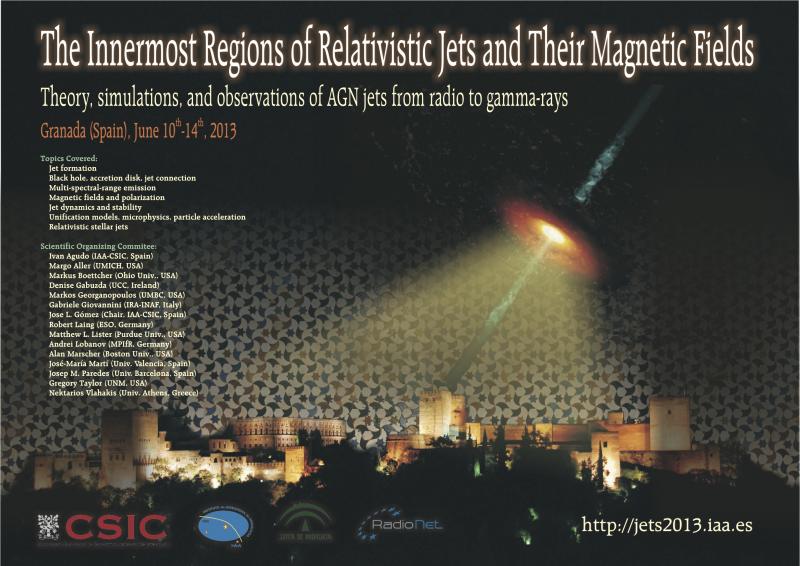The Innermost Regions of Relativistic Jets and Their Magnetic Fields. Granada (Spain). June 10th-14th, 2013.
Shahbaz, Tariq
Evidence for quiescent synchrotron emission in the Halo black hole X-ray transient Swift J1357.2-0933.
Author list: T. Shahbaz, D. M. Russell, C. Zurita, J. Casares, J. M. Corral Santana, V. S. Dhillon, T. R. Marsh
We present high time-resolution optical and infrared observations of the edge-on black hole X-ray transient Swift J1357.2-0933. Our data taken in 2012 shows the system to be at its pre-outburst magnitude and so the system is in quiescence. In contrast to other X-ray transients, the quiescent light curves of Swift J1357.2-0933 do not show the secondary star's ellipsoidal modulation. The optical and infrared light curves is dominated by variability with an fractional rms of about 20 per cent, much larger than what is observed in other systems. The quiescent ultraviolet to mid-IR spectral energy distribution in quiescence is dominated by a non-thermal component with a power--law index of --1.4, (the broad-band rms SED has a similar index) which arises from optically thin synchrotron emission from a jet; the lack of a peak in the spectral energy distribution rules out advection-dominated models. Using the outburst amplitude--period relation for X-ray transients we further constrain the distance 1.5 to 6.3 kpc. The short orbital period argues for a nuclearly evolved star with an initial mass 1.5 Msun, which has evolved to a 0.17 Msun star. The high Galactic latitude of Swift J1357.2-0933 implies a scale height between 1.2 and 4.8 kpc above the Galactic plane, placing Swift J1357.2-0933 in a sub-class of high-z short-period black hole X-ray transients in the Galactic Halo.




